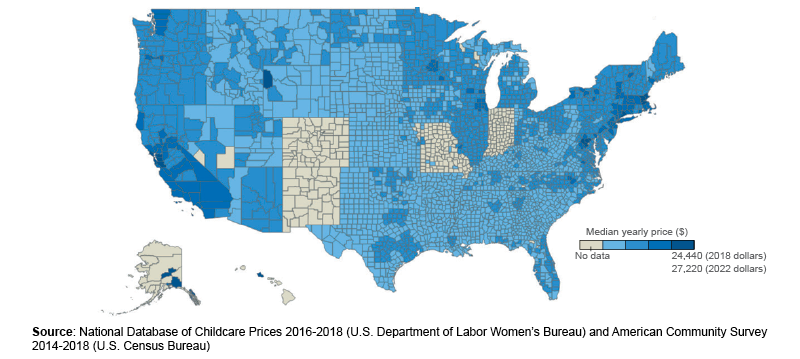News
New Data from U.S. Department of Labor Women's Bureau Shows Child Care Remains Out of Financial Reach for Many U.S. Families
Childcare prices are expensive and burdensome for many U.S. families. The U.S. Department of Labor Women's Bureau recently released a suite of resources – including the newly launched National Database of Childcare Prices (NDCP) and a new brief –which underscore the urgent need for more federal investment in child care. The NDCP, the most comprehensive federal source of childcare prices in the United States, offers childcare price data for center- and home-based providers caring for children ages 0-12. New interactive maps provide childcare prices in over 2,300 counties throughout the country. What Are Some Key Findings?
How Can You Access the Data?The release includes a brief summarizing the key highlights, interactive maps, a blog, and access to the NDCP's publicly available data.
 |
||||
Source: U.S. Department of Labor Women's Bureau


